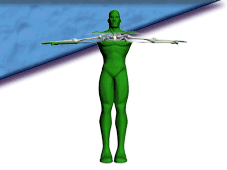SI Sprain - One-sided Low Back Pain
It is one-sided low back pain? Or is it one-sided hip pain? But the spine is ok. And the hip joint is ok. What is it? Could be a very common condition called Sacroiliac Sprain:

The sacroiliac joint is a largely fibrous joint, meaning that it is very ligament dependent for its support. The joint is formed by the connection of the sacrum (the large triangular-shaped bone that joins at its upper end with the lowest lumbar vertebra and ends at the other end with the coccyx, or tailbone) to the ilium (the large pelvic bone) on each side. Thus, there are two sacroiliac joints, one on the right and one on the left.
If the two pelvic bones are chronically deviated out of balance this can cause the sacro-iliac ligaments to over-stretch or micro-tear on one side. This will create a right or left “low back pain” that can become persistent. The sprained side can become somewhat hypermobile, causing the muscles of the pelvis, groin, buttocks, and leg to overwork and become repeatedly tight and achy. This is because these muscles are attempting to HOLD the joint together, which is the job of the sprained ligaments. The muscles will hold the joint partially and temporarily, but will become fatigued and eventually allow the joint to separate and hurt. So when you sit in the car or a soft chair the first few minutes are better until the muscles fatigue. Then the discomfort gets progressively more intense.
The pain often becomes chronic and recurrent because the ligaments in this deep, powerful joint often lack the blood supply to heal. The blood contains connective tissue growth cells called fibroblasts, the cells needed to cause the sprained ligaments to knit.
So, how can we cause this stubborn-healing joint to heal?
First, we put the joint together repeatedly through manipulation and exercises, and Second, we perform p.i.n.s. prolotherapy to draw blood to the area to promote growth.
Click here for more from Dr. Young on SI Sprains
Return to the Articles Page
Return to the Where's Your Pain? Page



